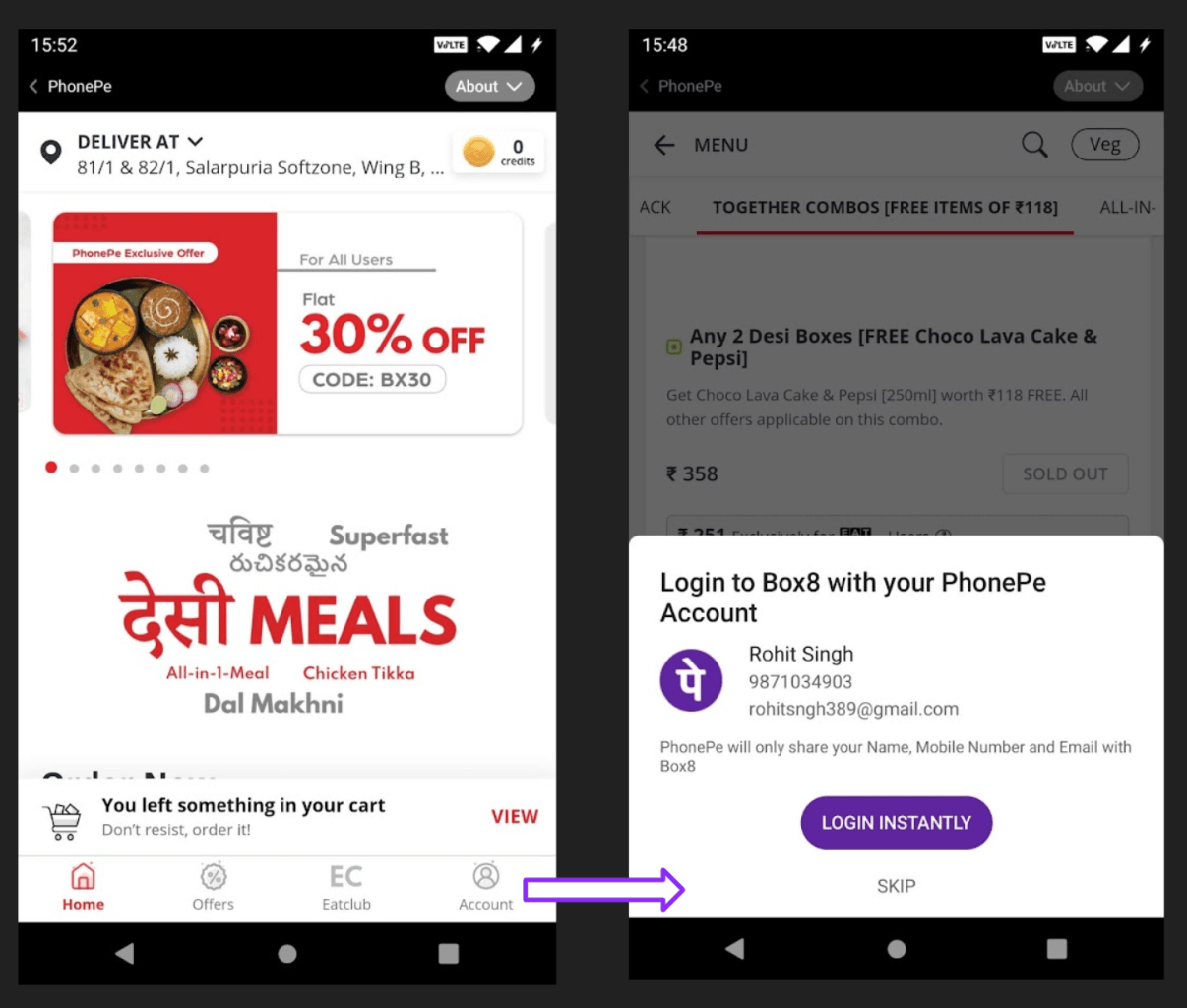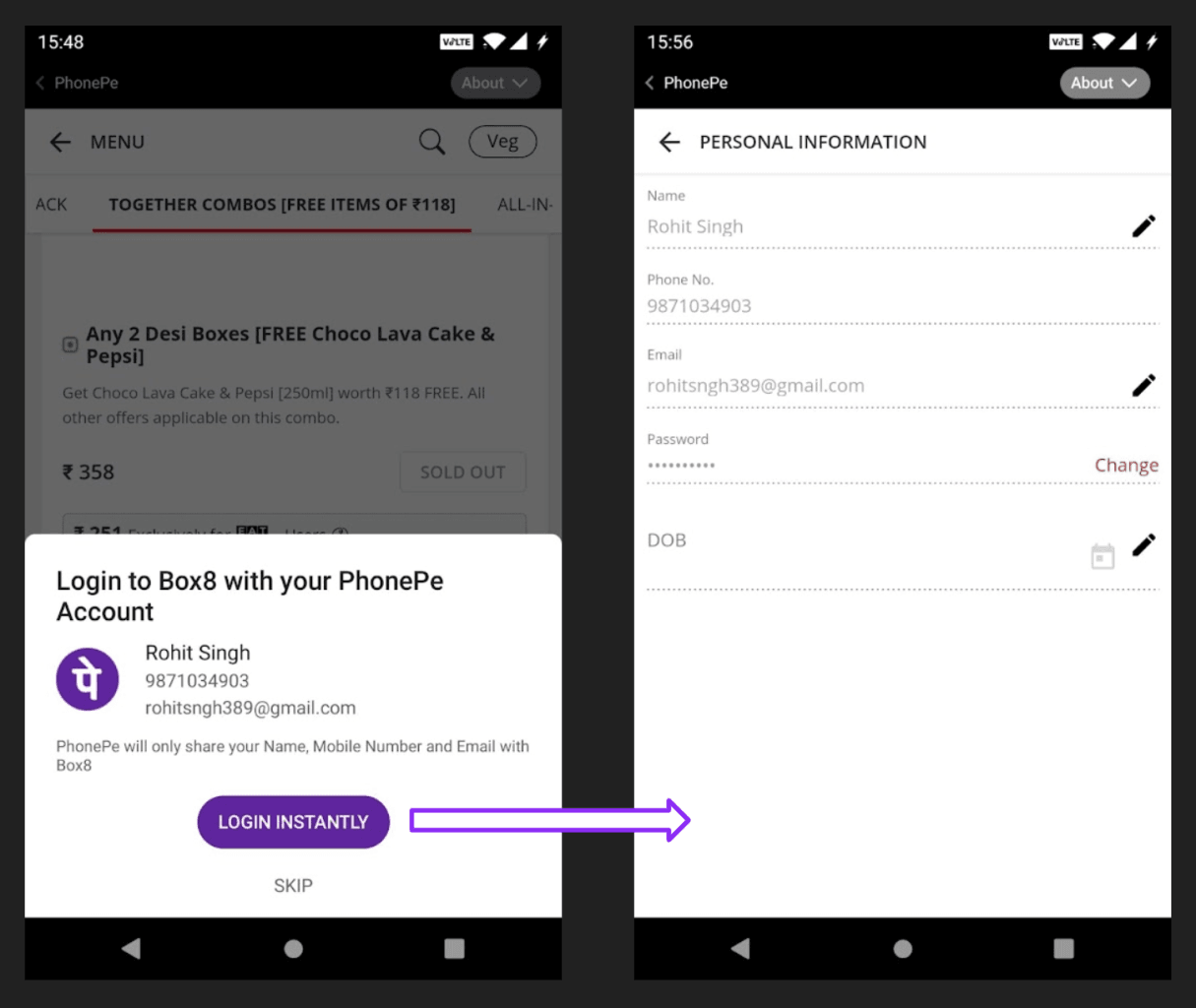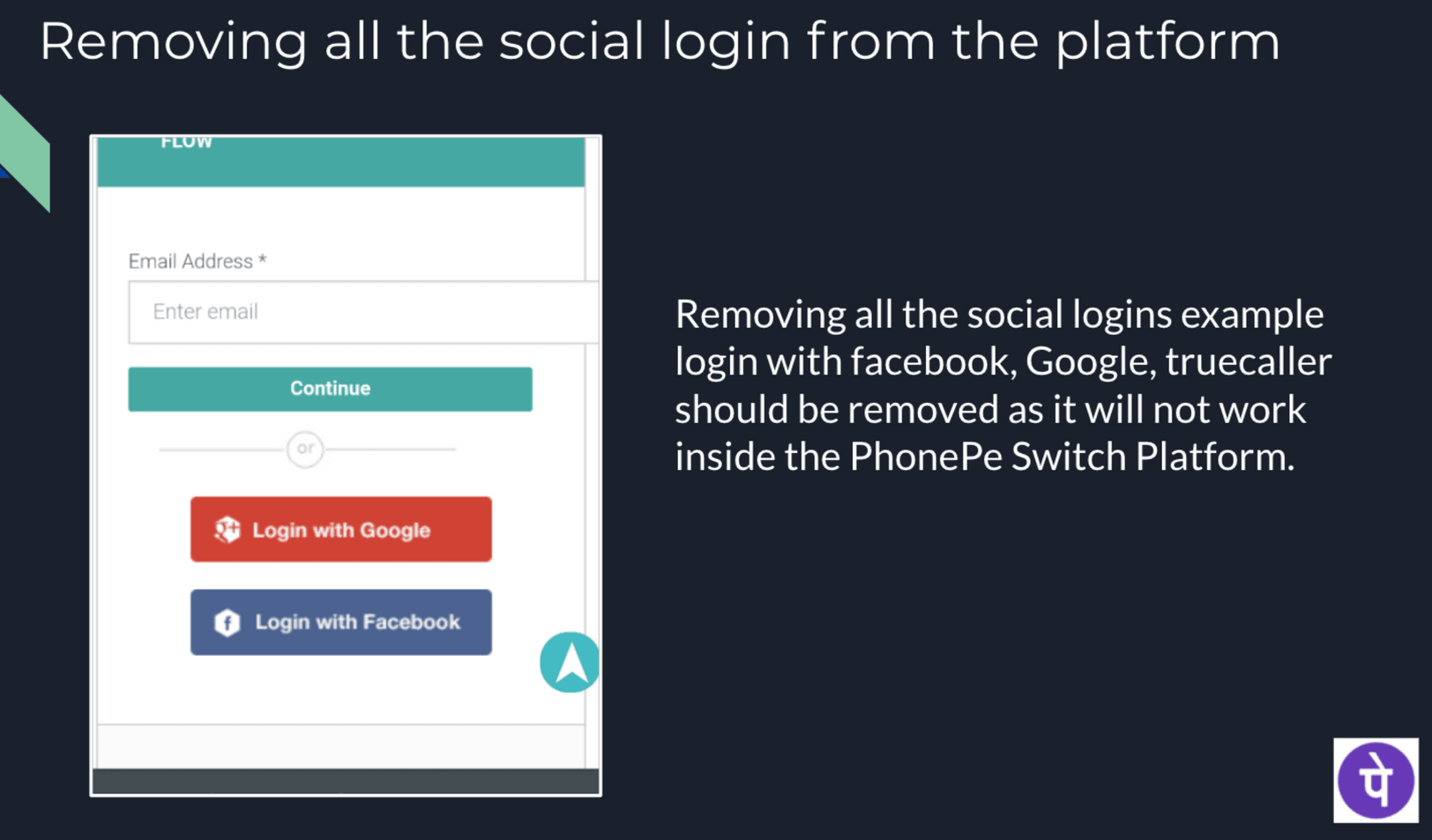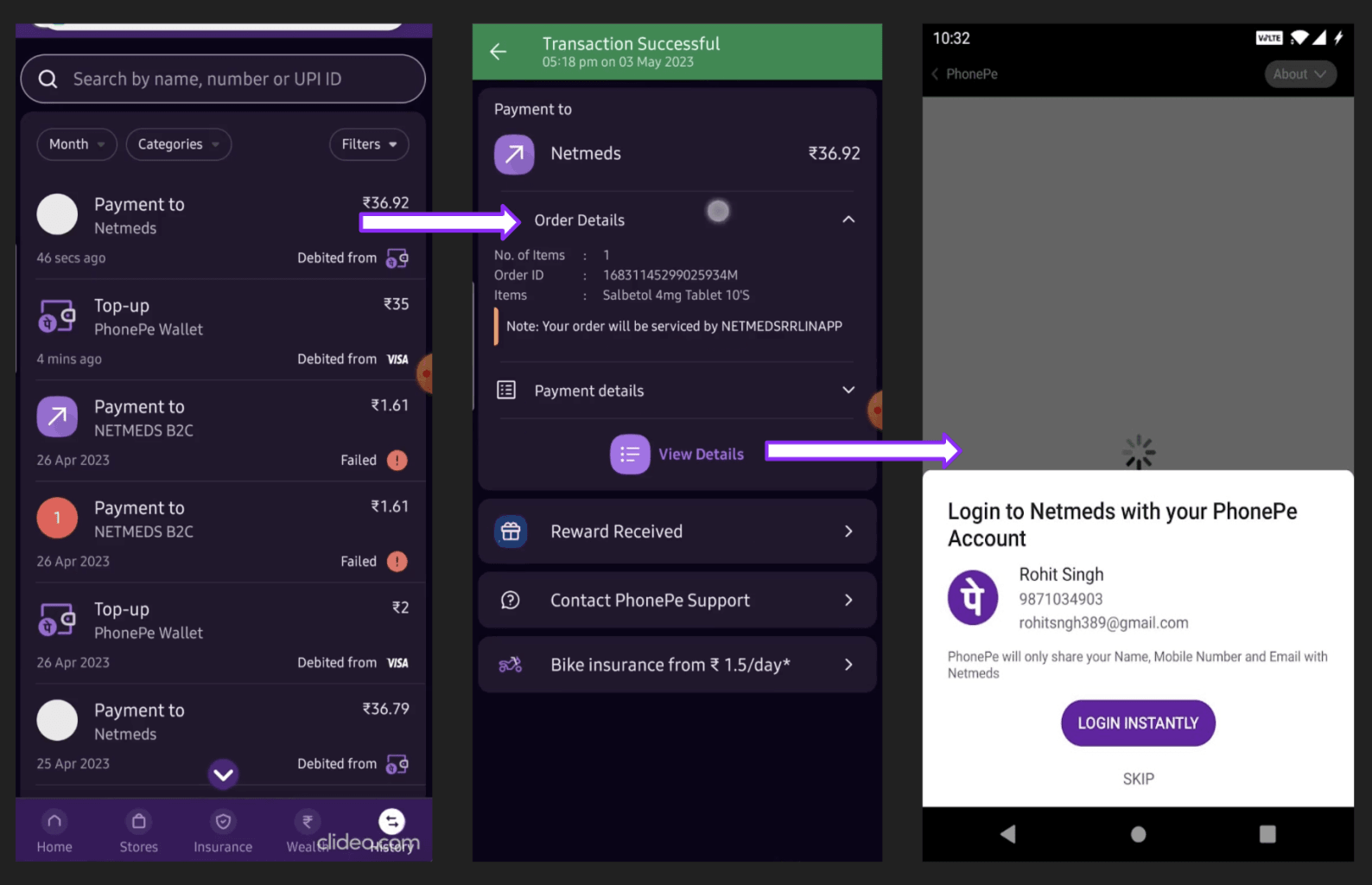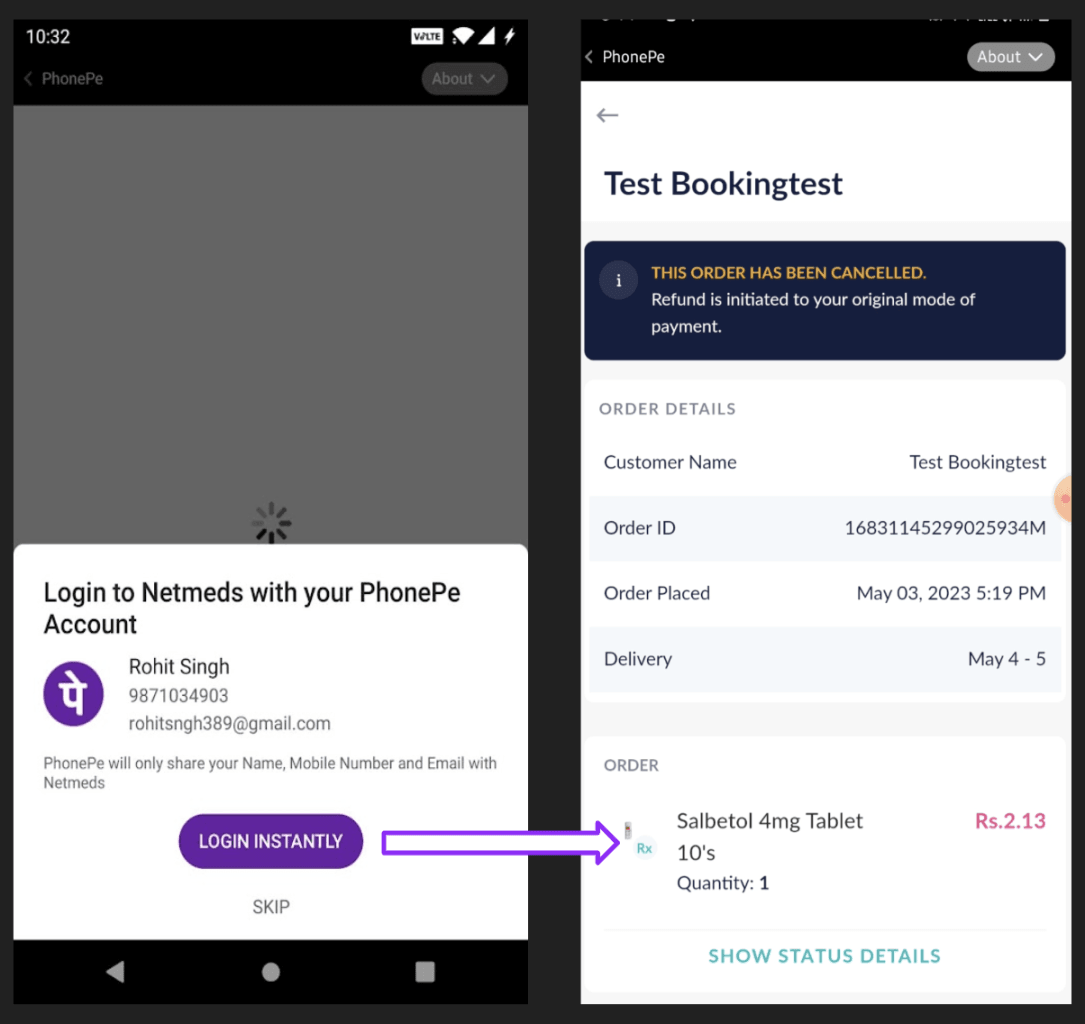Where To Show
SSO should be shown to the user in all the flow where the user needs to login inside the merchant website flow. For
a.) Example for a hotel industry site,
A user should be able to browse through the hotels, list hotels, and select rooms. At the point where he wants to book a hotel, an SSO should be asked to fetch the details of the user.
b.) If a user uninstalls & installs the PhonePe APP and tried to access his transaction details through PhonePe transaction Page, SSO should be shown to the user.
c.) If a user goes to his profile icon from the Merchant website home page and needs to log in. SSO flow should be called in this flow.
Autofill user details
Merchant should autofill the user details like his name, number, and email which are shared in the SSO APIs on his website.
Maintain user session
Merchant should save the session in cookies so that even the user kills the PhonePe app and again comes back, he should be logged In.
Remove all the third party social login
Merchant should remove all the social logins example: log in with Google/Facebook/any third party login flow as the same will not work in the Switch platform.
SSO on the particular order URL
URL is the deep link to the users particular order history, which needs to be sent at the time the payment is initiated.
Usually, a user can see his details only after he accepts SSO at the merchants msite. But if a user uninstalls & install the PhonePe APP and tried to access his transaction details through PhonePe transaction Page, SSO should be shown to the user.
Example : A user uninstalled and installed the APP and want to access his Netmeds order, SSO should be shown.
When he clicks on Login :
When he clicks on Skip :
